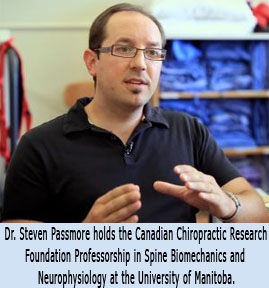Research article discussion
Perspectives of older adults on co-management of low back pain by doctors of chiropractic and family medicine physicians: a focus group study
Provisional Abstract
Background
While older adults may seek care for low back pain (LBP) from both medical doctors (MDs) and doctors of chiropractic (DCs), co-management between these providers is uncommon. The purposes of this study were to describe the preferences of older adults for LBP co-management by MDs and DCs and to identify their concerns for receiving care under such a treatment model.
Methods
We conducted 10 focus groups with 48 older adults who received LBP care in the past year. Interviews explored participants’ care seeking experiences, co-management preferences, and perceived challenges to successful implementation of a MD-DC co-management model. We analyzed the qualitative data using thematic content analysis.
Results
Older adults considered LBP co-management by MDs and DCs a positive approach as the professions have complementary strengths. Participants wanted providers who worked in a co-management model to talk openly and honestly about LBP, offer clear and consistent recommendations about treatment, and provide individualized care. Facilitators of MD-DC co-management included collegial relationships between providers, arrangements between doctors to support interdisciplinary referral, computer systems that allowed exchange of health information between clinics, and practice settings where providers worked in one location. Perceived barriers to the co-management of LBP included the financial costs associated with receiving care from multiple providers concurrently, duplication of tests or imaging, scheduling and transportation problems, and potential side effects of medication and chiropractic care. A few participants expressed concern that some providers would not support a patient-preferred co-managed care model.
Conclusions
Older adults are interested in receiving LBP treatment co-managed by MDs and DCs. Older adults considered patient-centered communication, collegial interdisciplinary interactions between these providers, and administrative supports such as scheduling systems and health record sharing as key components for successful LBP co-management.
The complete article is available as a provisional PDF. The fully formatted PDF and HTML versions are in production.


 Research is key to developing better treatments and care protocols to eliminate disease and stay healthy. The chiropractic profession is fortunate to have twelve Canadian Chiropractic Research Foundation (CCRF) research chairs in major universities across the country, each of which conducts and contributes to world class research. But the more significant benefits to weaving these research chairs into the fabric of academia are the interdisciplinary connections and collaborations that result. There is no other time in history where we have seen so many different health professions coming together with one common goal: improving healthcare.
Research is key to developing better treatments and care protocols to eliminate disease and stay healthy. The chiropractic profession is fortunate to have twelve Canadian Chiropractic Research Foundation (CCRF) research chairs in major universities across the country, each of which conducts and contributes to world class research. But the more significant benefits to weaving these research chairs into the fabric of academia are the interdisciplinary connections and collaborations that result. There is no other time in history where we have seen so many different health professions coming together with one common goal: improving healthcare.